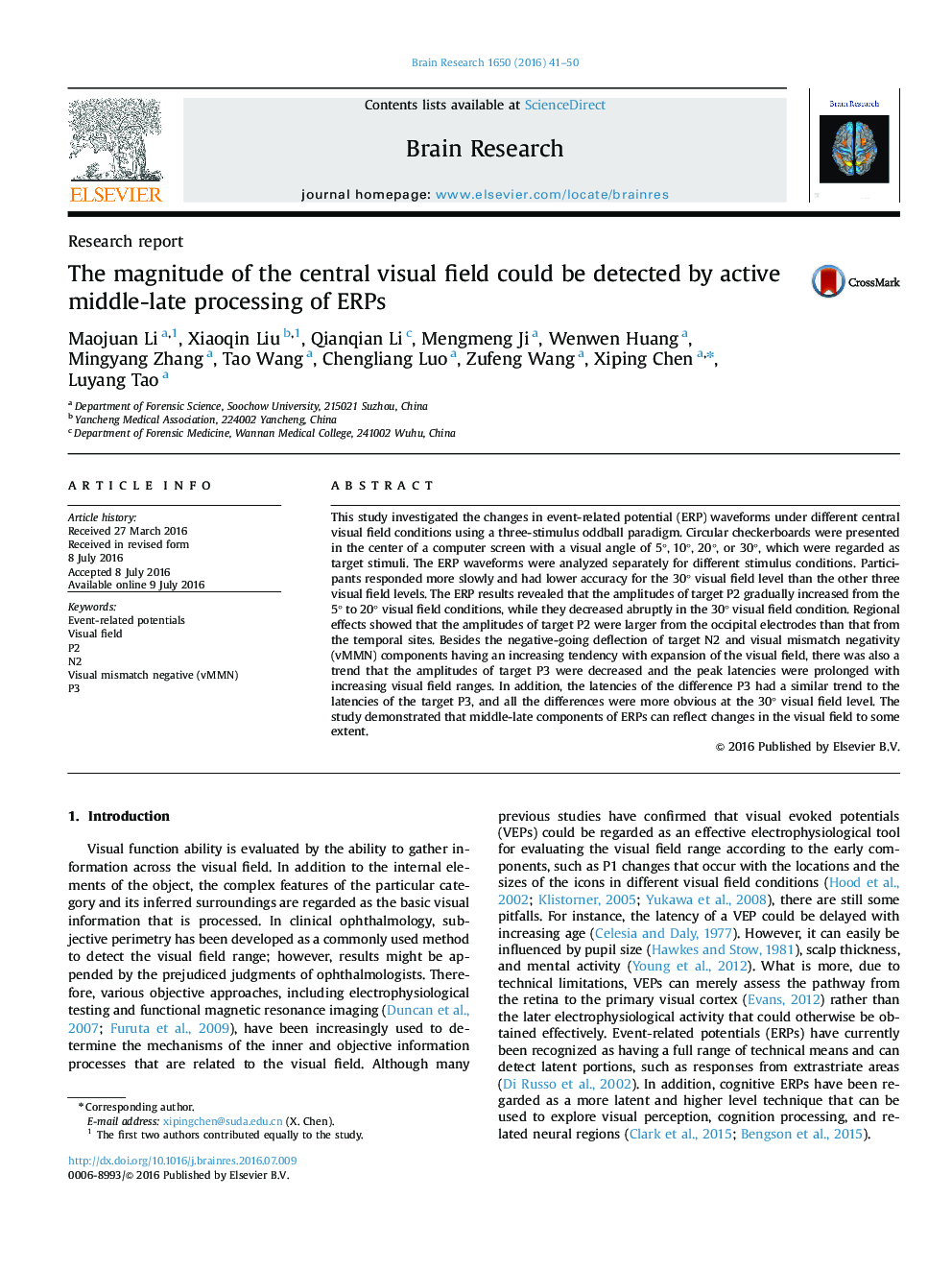| Article ID | Journal | Published Year | Pages | File Type |
|---|---|---|---|---|
| 6262260 | Brain Research | 2016 | 10 Pages |
â¢We studied the correlation between ERPs and the magnitude of the visual field.â¢P2 amplitudes declined observably at the 30° visual field level.â¢N2 and visual MMN amplitudes had an increased tendency of expanding of the central visual field ranges.â¢We provide proofs which ERPs could reflect the change in the magnitude of the central visual field.
This study investigated the changes in event-related potential (ERP) waveforms under different central visual field conditions using a three-stimulus oddball paradigm. Circular checkerboards were presented in the center of a computer screen with a visual angle of 5°, 10°, 20°, or 30°, which were regarded as target stimuli. The ERP waveforms were analyzed separately for different stimulus conditions. Participants responded more slowly and had lower accuracy for the 30° visual field level than the other three visual field levels. The ERP results revealed that the amplitudes of target P2 gradually increased from the 5° to 20° visual field conditions, while they decreased abruptly in the 30° visual field condition. Regional effects showed that the amplitudes of target P2 were larger from the occipital electrodes than that from the temporal sites. Besides the negative-going deflection of target N2 and visual mismatch negativity (vMMN) components having an increasing tendency with expansion of the visual field, there was also a trend that the amplitudes of target P3 were decreased and the peak latencies were prolonged with increasing visual field ranges. In addition, the latencies of the difference P3 had a similar trend to the latencies of the target P3, and all the differences were more obvious at the 30° visual field level. The study demonstrated that middle-late components of ERPs can reflect changes in the visual field to some extent.
